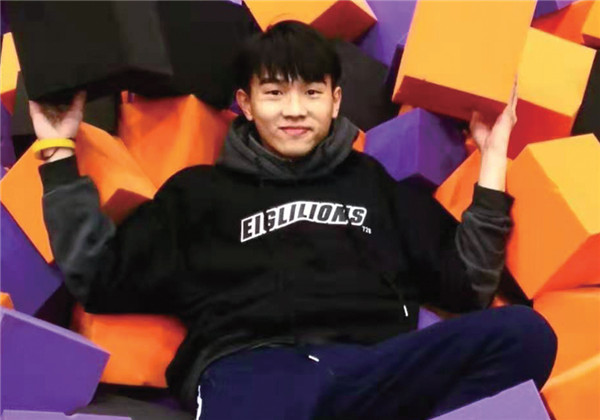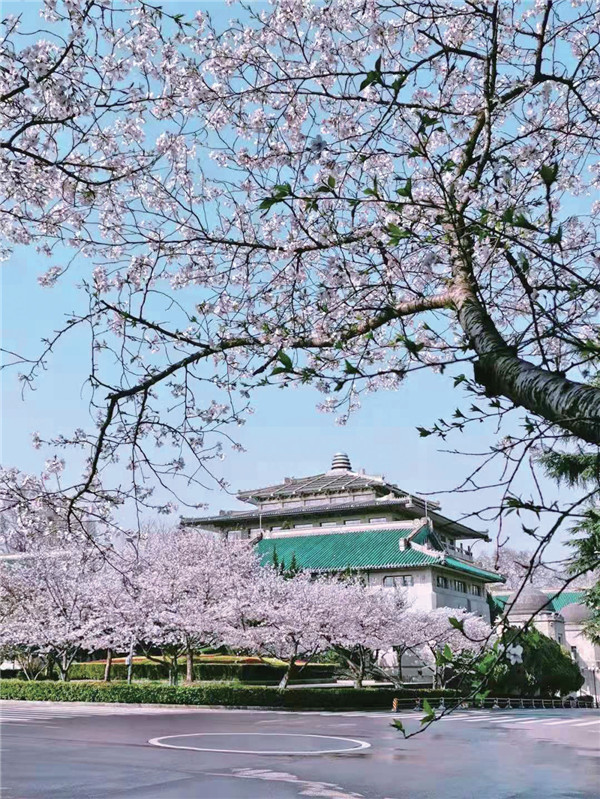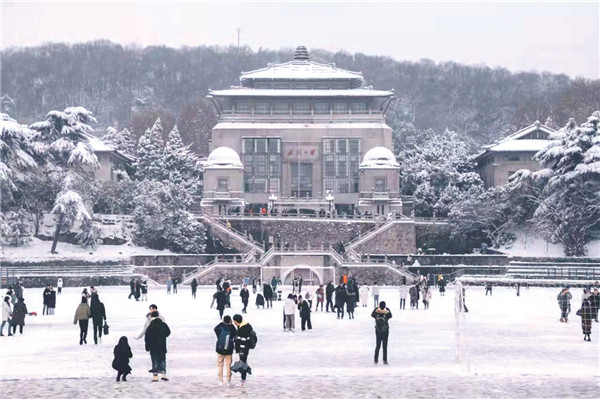我与汉字的美丽邂逅
[马来西亚] 陈嘉扬 武汉大学

我依稀记得第一次接触汉字的时候,横平竖直的汉字让我感到无趣、苦涩难懂,并且常抱怨汉字的复杂性,因为汉字的笔画、偏旁部首和拼音千变万化,一旦写错任何一项,所表达出来的意思就是截然不同的。直到来中国求学后,我才领悟到汉字的一撇一捺皆凝聚着中国古人的智慧结晶,汉字的一横一竖皆浸染着中华民族的人文情怀、汉字的一笔一画皆承载着华夏五千年文明的光辉历程!

武汉大学 / 陈嘉扬提供
上个学期,我选修了国际教育学院开设的通识课——《汉字文化》。在这门课中,我仿佛走进了汉字的文化宝库,并学习到了汉字的起源、演变、构造、艺术和文化等,让我见识到了源远流长的汉字史!汉字从甲骨文演变到楷书的漫长过程,反映了中华民族的美学追求,并且展现出了汉字深厚的文化意蕴。此外,不论是象形、指事、会意还是形声,勾勒出的是汉字的筋骨和神韵。汉字就像一座桥梁,把我和中国联结起来,让我得以了解中国五千年以来生生不息的历史脉络。因为汉字,我学习到了博大精深的中国文化,比如“夫”字,它的本意是指成年人,即一个人上面有一杠,而杠就是簪子,而中国古人二十岁时需进行冠礼的仪式,用簪子把头发束起来,意味着来到成年人的阶段了。此外,十二生肖里的“龙”,华人之所以被称为“龙的传人”是因为原始部族都有各自的图腾,随着华夏民族逐渐地融合,各个民族的图腾身上的特征也融合在一起,就变成了“龙”,如龙的角像鹿角、眼睛像虾眼、身体像蛇身、爪子像鹰爪等,反映了中华民族自古以来的兼容并蓄。

武汉大学 / 陈嘉扬提供
汉字丰富含义的组合是其他文字所无法替代的,如中国著名的国产品牌——华为,意思是“中华有为”。宇宙的“宇”是四方上下,是空间单位,“宙”是古往今来,是时间单位,空间和时间合起来就是时空,即宇宙。汉字之美,不仅美在形体,也美在内涵,我们可以在日常生活中品读汉字的风采:地名方面,中国很多地名皆蕴含着诗意,如长安、云梦和金陵等;中药名字方面有紫苏、半夏、蝉衣等;天气方面有芒种、白露、谷雨等;甚至每个月份皆有韵味的雅称,如二月份有杏月、丽月和花月之称。如今在我眼中,汉字不是僵硬的书写工具,它富有感情、有色彩、有生命力。此外,我最喜欢的汉字是“阳”字,因为“阳”充满着正能量,且寓意让生命光芒万丈!

武汉大学 / 陈嘉扬提供
感谢汉字,不仅让我欣赏到了熠熠生辉的历史文化面貌,也让我触摸到了中国的繁华!
时至今日,波澜壮阔的华夏篇章还在不断地书写中……
My Beautiful Encounter with Chinese Characters
[Malaysia] Tan Jia Yang, Wuhan University
I still remember the first time when I saw Chinese characters. Those square characters were boring and hard to understand. I often complained about the complexity of Chinese characters. The strokes, radical components andpinyin (pronunciation) of Chinese characters vary radically. Any minor difference might lead to quite different meaning. I started to realize the wisdom of Chinese characters in each stroke after I came to study in China. Each stroke in Chinese characters embodies the humanistic concerns and glorious 5,000-year civilization of China.
Last semester I took a general courseCulture of Chinese Character in the College of International Education as an elective course. I learned the origins, evolution, structure, art and culture of Chinese characters in this course, as if I walked into a culture treasure house. I started to know how long the history of Chinese characters was. From inscriptions on Oracle shells to regular script, the long evolution of Chinese characters displays the aesthetic pursuit of Chinese people as well as the cultural connotation of Chinese characters. Whether indicative, pictographic, pictophonetic or associative characters, they all display the muscles and charm of Chinese characters. Like a bridge, Chinese characters connect China with me, through which I began to understand the 5,000-year everlasting history of China. Through Chinese characters, I learned the charm of the broad and profound Chinese culture. For example, the Chinese character “夫” (Fu), means adult, and it is made up of the character “人” (means human) and two sticks (hair clasps), which vividly depicts a human whose hairs are bundled by hair clasps. In ancient China, an adult ceremony to bundle his hairs with clasps will be held for a kid when he turns 20. The Dragon“龙”(Long)in the 12 Chinese Zodiac embodies characteristics of multiple animals, such as horns of deer, eyes of shrimps, body of snakes and claws of eagles. This fully indicates the inclusiveness of different cultures of Chinese people. Therefore, Chinese people are also called the descents of dragons.
The rich connotations of Chinese characters are beyond comparison with other characters. For example, the world-known telecom manufacturer Huawei, whose Chinese name means Promising China;“宇宙” (Yu Zhou)means the universe, its first character “宇” (Yu) means a spatial unit and “宙” (Zhou) means a time unit, therefore, space and time being combined is the universe. The beauty of Chinese character lies not only in its physical structure, but also in its connotation. We can experience the charm of Chinese characters in our daily life. For example, there are lots of places being named with poetic charms, such as Chang’an (means everlasting peace), Yunmeng (means dreams on clouds) and Jinling (means golden hills); Chinese medicine names are also very poetic, such as Zisu (literally means purple leaves), Banxia (literally means mid-summer) and Chanyi (literally means the clothes of cicadas); for seasons, there are Mangzhong (literally means the time to plant grains), Bailu (means the time to have white dews) and Guyu (literally means grain rain); even every month has a beautiful name, such as February is called the month of apricot, the month of flowers or the month of beauty etc. Now in my eyes, Chinese characters are not only for writing and communication, and they are colourful, with emotions and vitality. I love“阳” (Yang, means sunshine) the most, because Yang means positive and shining!
Thanks to Chinese characters, which not only show me how vivid and glorious Chinese culture is, but also displays the prosperity of China.
Until now its splendour and glory is going on…



